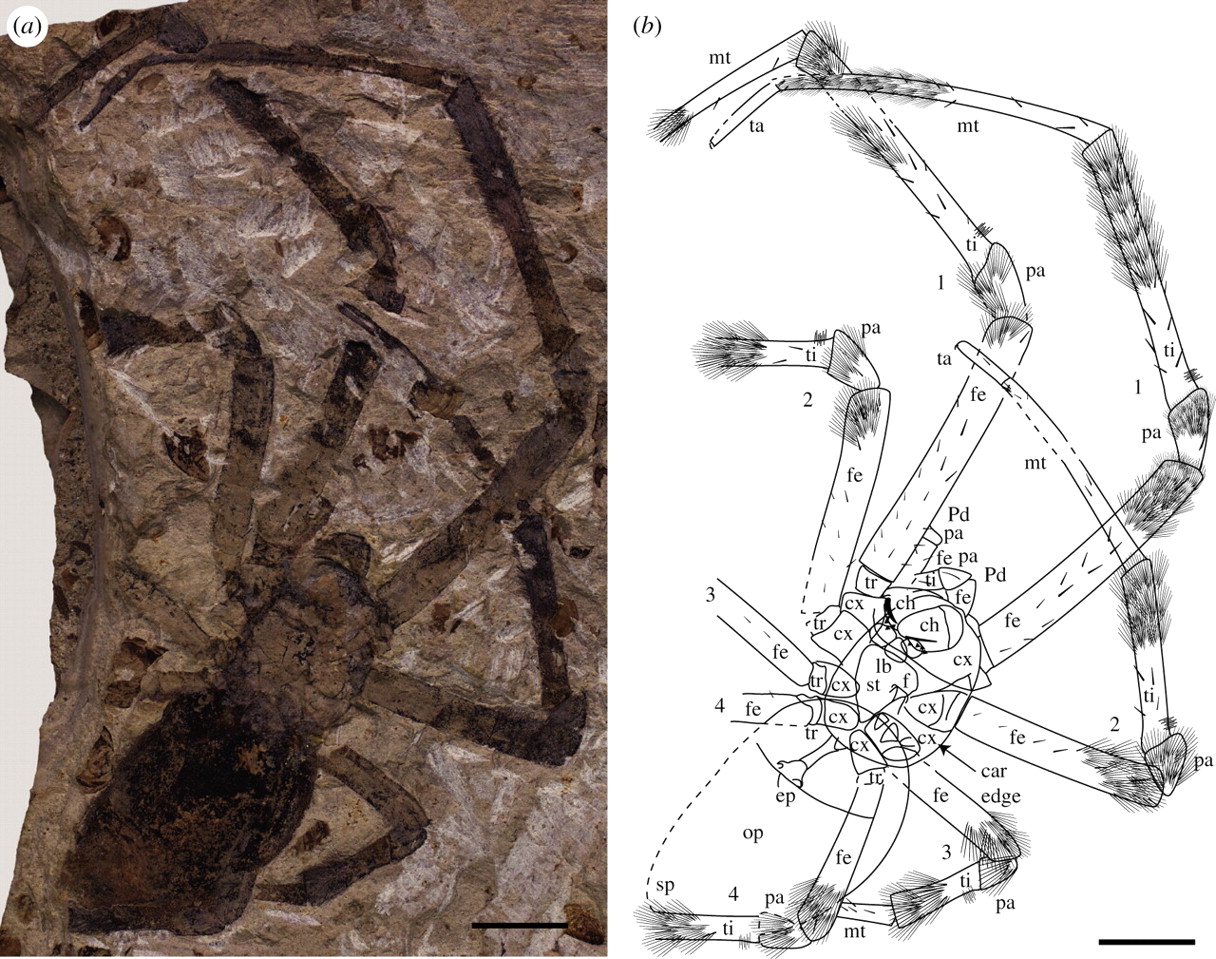The previous oldest member of the family found was Cretaraneus vilaltae from Spain and the new find stretches nephila genus evolution back another 130 million years - and to Mongolia, when the north China block was part of the Pangaeasupercontinent.
Nephila jurassica is also only the second female fossil nephilid to be described.
In the Jurassic period, the palaeoclimate of Daohugou has been classified as warm temperate based but researchers say the presence of Nephila could mean Mongolia then was warmer or that N. jurassica was different than its more tropical descendants and possibly that the genus originated in a warm temperate climate and later radiated into the tropics.
The fossil was found in volcanic ash.

CLICK FOR FULL SIZE. Nephila jurassica sp. nov. holotype (CNU-ARA-NN2010008). (a) Whole specimen, dry; (b) explanatory drawing to accompany (a); scale bar, 5 mm. Setal brushes and trichobothria diagrammatic. car, carapace; ch, chelicera; cx, coxa; ep, epigyne; f, fovea; fe, femur; lb, labium; mt, metatarsus; op, opisthosoma; pa, patella; Pd, pedipalp; sp, spinnerets; st, sternum; ta, tarsus; ti, tibia; tr, trochanter.
Citation: Paul A. Selden, ChungKun Shih and Dong Ren, 'A golden orb-weaver spider (Araneae: Nephilidae: Nephila) from the Middle Jurassic of China', Biol. Lett., Published online before print April 20, 2011, doi: 10.1098/rsbl.2011.0228





Comments